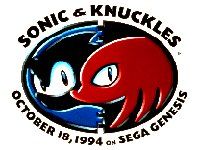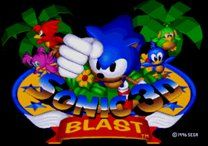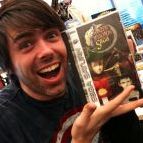The rise, fall and deafening crash of Sonic the Hedgehog
A teary-eyed examination of gaming's greatest casualty

Above: CRAP
How did it come to this?
That's what we're here to discuss. From the successful beginning to the most recent "Wolf Sonic" shocker, we'll chronicle Sonic's descent from superstar to punchline.

If you weren't around for Sonic's arrival, you missed out on his best moments. Sega needed a mascot that could rival Nintendo's unchallenged Mario, and in 1991 that's precisely what it created. Sonic's carefully designed attitude, penchant for speed and "I've got things to do" demeanor made Mario look like, well, a slow, tubby plumber. Sonic was cool and Mario wasn't, a "truth" that madebitter rivalsout of gamers everywhere.
This cultural takeover happened so fast you'd swear Sonic himself orchestrated the whole thing. Cartoons, collectibles, comic books, even a float in the Macy's Thanksgiving Day Parade, making him the very first gaming icon to appear in one of America's best known celebrations. There's also evidence to suggest that in the early to mid 1990s, Sonic was more well-known to kids than Mickey Mouse. He went from idea to worldwide icon faster than Mario - just one of the many things Sega claimed Nintendidn't do at the time. As a result, Sega was on top of the world, gleefully stealing Nintendo's iron-fisted market share day by day, playground by playground.

After three highly successful entries on the Genesis/Mega Drive, Sonic's renown was at its peak. Each game was a joy, letting you tear ass through all kinds of colorful stages faster than any other game at the time, yet maintained a sense of order; even though Sonic's going nuts, you still felt in control, that you were the one making him do all these amazing things. Running through corkscrews, giant loops and infinitely long half pipes were experiences exclusive to Sonic, and Sonic only gamed for Sega. He wasn't just a franchise anymore, he was the company.

As the early '90s wore on, Sonic starred in the flagship Sega CD title, Sonic CD, one of GR's favorite games in the series. Then Sonic & Knuckles landed in 1994 with "lock on" tech that let you snap Sonic 2 and 3 into the top of the cart, unlocking Knuckles as a playable character in the older games. There were two cartoons airing during this time too; neither was very good. The first wasembarrassingly juvenileand the other took itselftoo seriously. For our money, the best piece of Sonic animation came from the aforementioned Sonic CD:
Sign up to the GamesRadar+ Newsletter
Weekly digests, tales from the communities you love, and more
Above: The Sega CD version was grainy and small, but this GameCube remake restored the ending to its full screen, hyperactive glory

Fun as they were, Sonic CD and Knuckles were essentially more of the same.The formula, while immensely successful and the basis for countless 16-bit imitators, wasn't going to keep Sonic ahead of the pack forever. Early experiments like 3D Blast werehardlyrunaway hits.
With what appeared to be a blank slate for the property, Sonic developers went wild with new ideas. And what came out was derivative, unwanted nonsense.
A fomer Executive Editor at GamesRadar, Brett also contributed content to many other Future gaming publications including Nintendo Power, PC Gamer and Official Xbox Magazine. Brett has worked at Capcom in several senior roles, is an experienced podcaster, and now works as a Senior Manager of Content Communications at PlayStation SIE.
Most Popular




